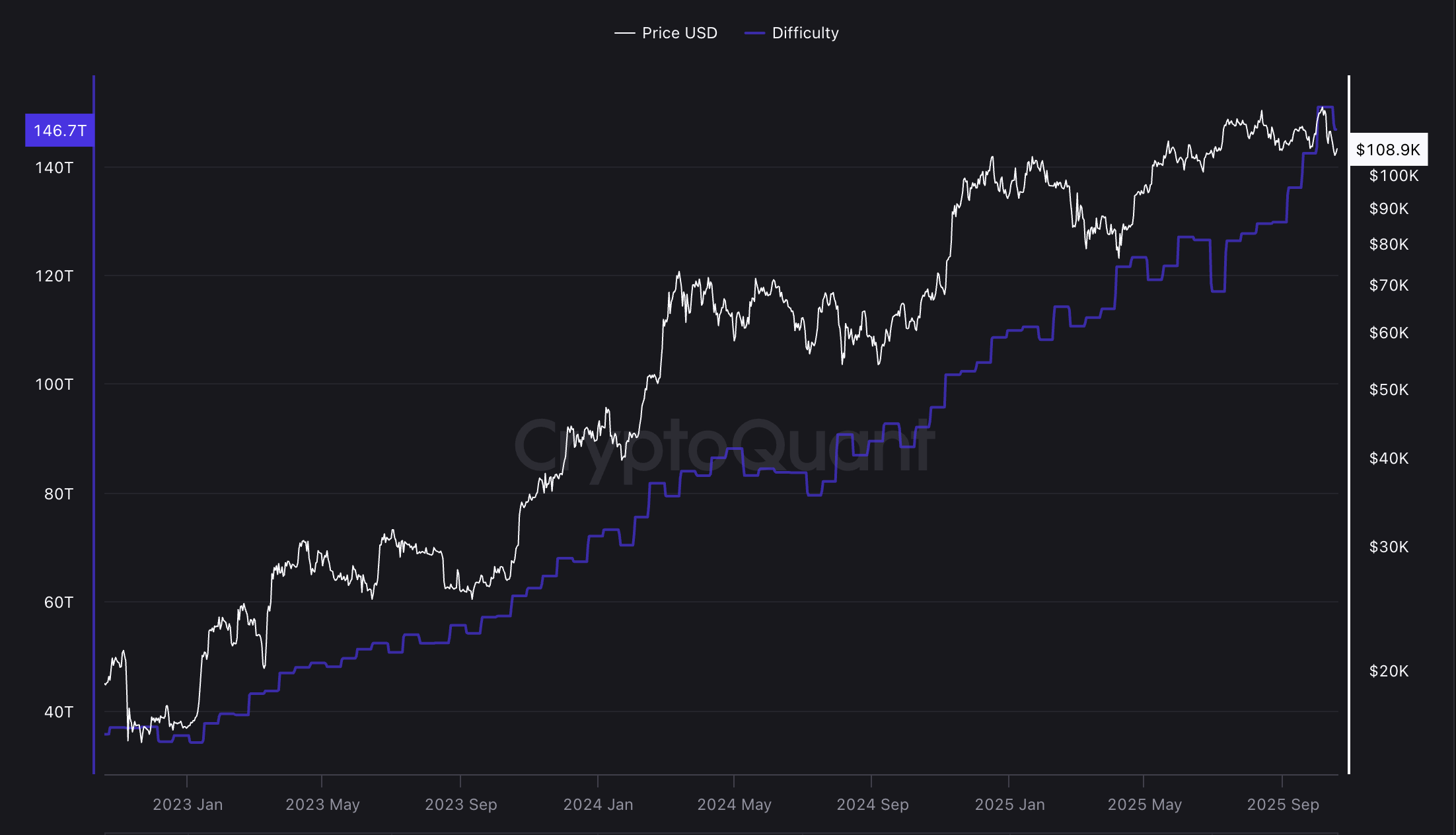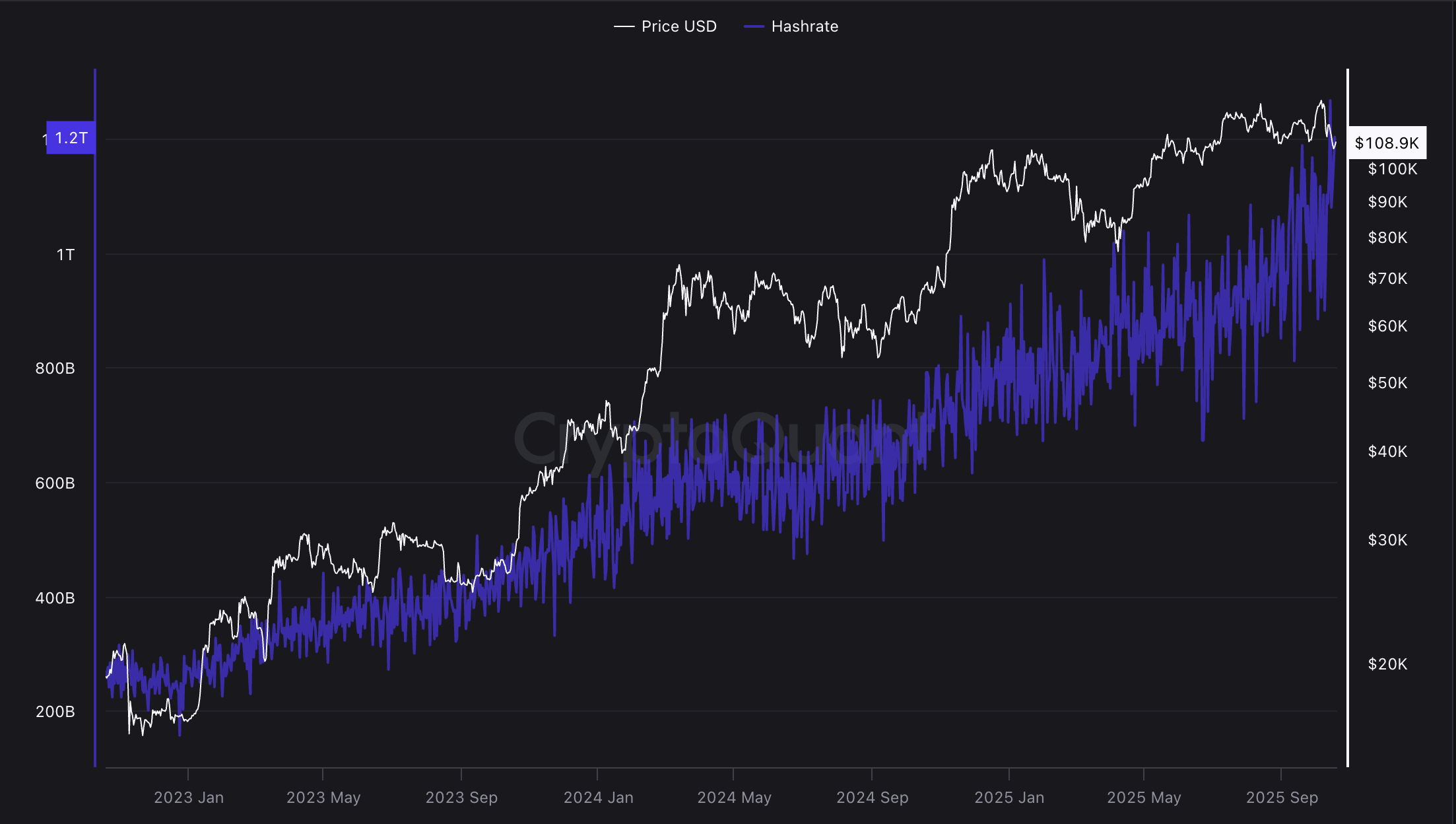
Bitcoin Mining Sees Easier Conditions, But Challenges Ahead as Hashrate Surges
Bitcoin's network hashrate has reached new heights even as mining difficulty decreases, creating both opportunities and challenges for miners.
Bitcoin’s mining network difficulty decreased to 146.7 trillion on Friday, while the network hashrate—representing the total computing power dedicated to keeping the decentralized protocol secure—surged to a record high of over 1.2 trillion hashes per second. This marks a decrease of approximately 2.7% in BTC mining difficulty from the previous peak of over 150.8 trillion. Data from CoinWarz corroborates this finding.
 Bitcoin mining difficulty drops. Source: CryptoQuant
Bitcoin mining difficulty drops. Source: CryptoQuant
Despite a slight drop from Tuesday’s peak, the hashrate remains significantly elevated, as confirmed by data from CryptoQuant.
“The next difficulty adjustment is estimated to take place on Oct 29, 2025, at 08:14:49 AM UTC, increasing the Bitcoin mining difficulty from 146.72 T to 156.92 T, which will be executed in 1,474 blocks.”
This increase in hashrate indicates that miners will need to expend greater computing resources to add blocks to the Bitcoin ledger, adding more strain on miners who are already dealing with reduced block rewards, trade policies, and intense competition.
 Bitcoin network hashrate hit an all-time high of over 1.2 trillion hashes per second. Source: CryptoQuant
Bitcoin network hashrate hit an all-time high of over 1.2 trillion hashes per second. Source: CryptoQuant
Miners Explore Alternative Revenue Streams Amid Challenges
Mining companies are seeking alternative revenue sources to mitigate income shortfalls from crypto mining, including venturing into AI data centers and other high-performance computing avenues. Core Scientific, Hut 8, and IREN are re-allocating resources towards AI data centers to enhance profits and lessen their reliance on crypto mining revenue.
However, the shift towards AI has introduced tensions between miners and AI infrastructure providers, as both sectors aggressively compete for affordable energy sources necessary for their operations.
Regardless of new revenue paths, the mining industry faces ongoing regulatory challenges and potential supply chain problems stemming from U.S. President Donald Trump’s trade tariffs, increasing the cost of mining hardware in affected regions. This puts miners at a competitive disadvantage compared to those in regions without such tariff burdens.
If trade tensions with China continue to escalate, potential export controls on processors and other essential electronics could complicate hardware acquisition further.


